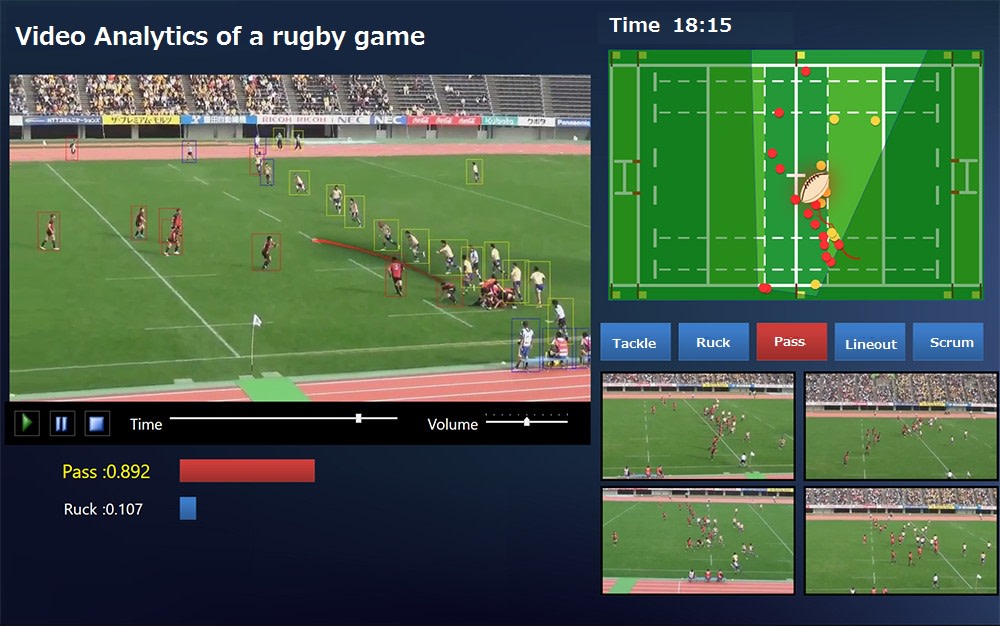What’s Next for a Japanese Rugby World Newly Armed with ICT?
2018/04/02 Toshiba Clip Team
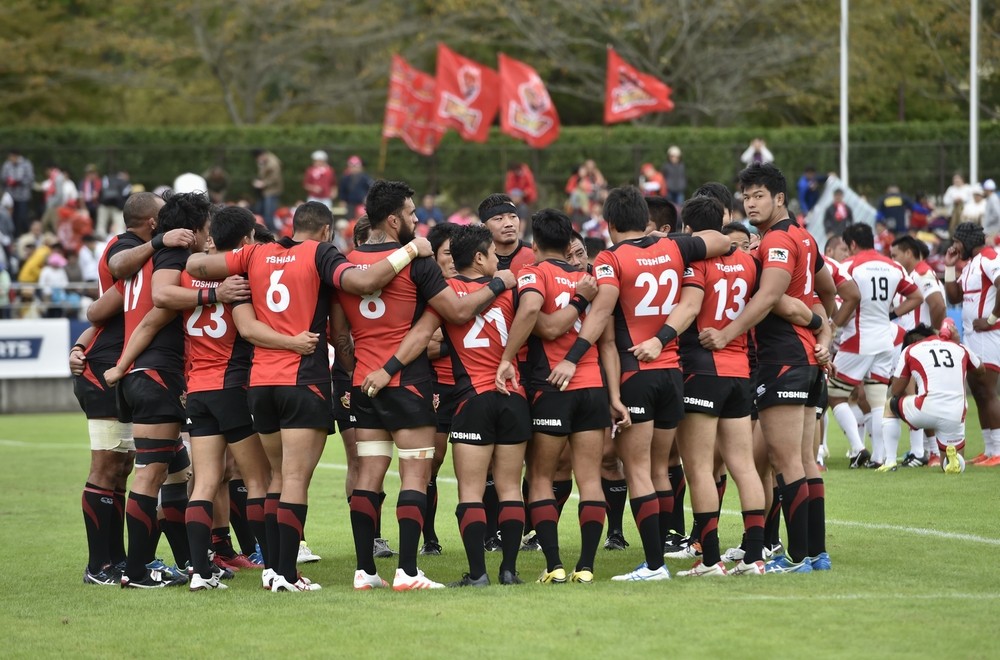
Science and sport have long been allies—but achieving a really strong partnership is more difficult in some sports than others. That’s certainly true of rugby, where the number of players and the speed and flow of the game have all slowed adoption of video analytics. But all that is changing. Drones now hover above plays and AI analytics are evaluating moves. These and other information and communication technologies are making a difference. What does that mean for Japanese rugby?
We asked Toshiaki Hirose, former captain of Toshiba Brave Lupus, Toshiba’s rugby team, and Japan’s national team in his playing days, and still a driving force behind Japanese rugby, for his thoughts.
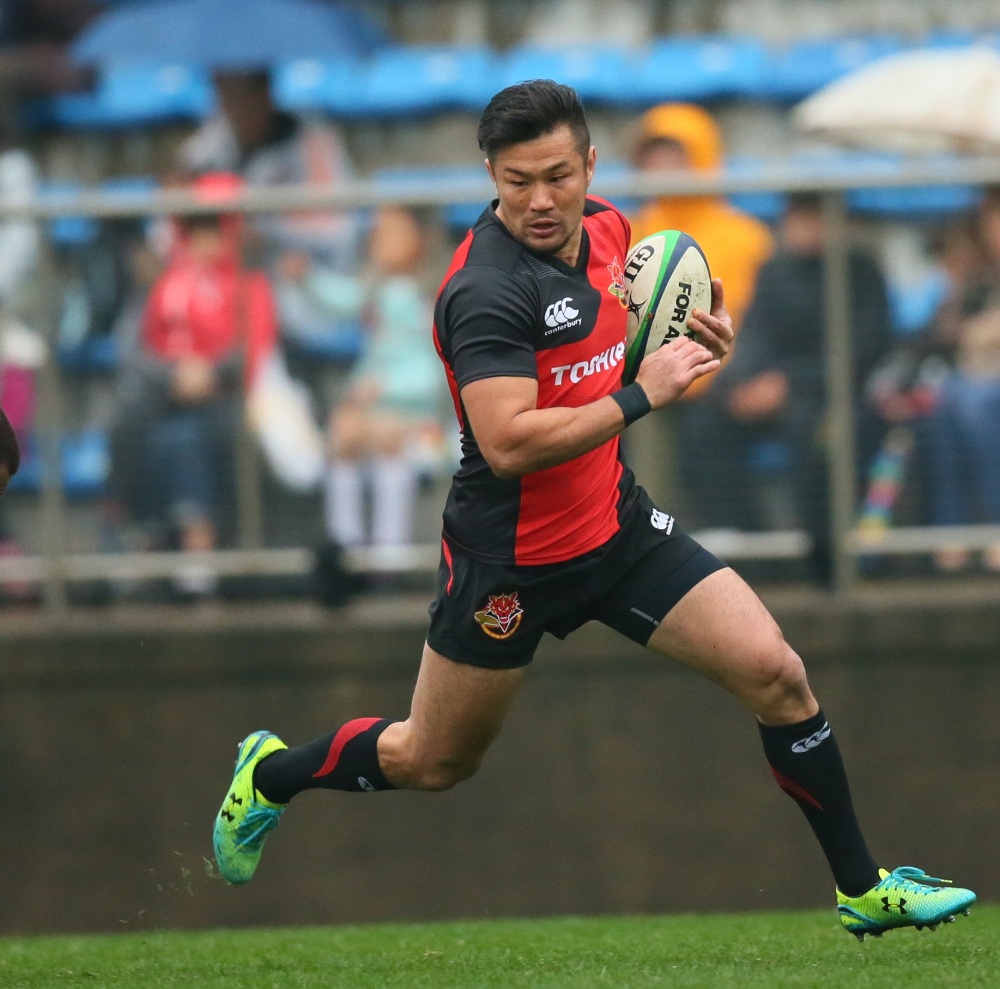
Toshiaki Hirose. His phenomenal leadership skills earned him high praise from Eddie Jones, the then coach of the Japanese national team, who called him, “the number one captain he had ever seen in the rugby world.”
Toshiaki Hirose. His phenomenal leadership skills earned him high praise from Eddie Jones, the then coach of the Japanese national team, who called him, “the number one captain he had ever seen in the rugby world.”
Everyone Seeing Everything: The Benefits and Anxieties
Since three years ago, members on Japan’s national team was given a tablet. ICT tools, which at that point were commonplace overseas, had finally come to Japan. Armed with this new weapon, Japanese rugby set out to train for battle.
“Before tablets were provided to every player, there was one computer in the clubhouse that we all shared,” recalls Hirose. “Rugby is a large-scale sport, with 15 people on each side, and there’s a limit to what each player can see on the field, so analyzing these videos meant a lot to us. But it was hard for us to use the computer when we wanted to, just because so many of us were sharing it, and so the tablets were really helpful. All the video that’s filmed in practice and during games is now uploaded right away onto the cloud, so we can all look at them whenever we want to.”
Hirose says that the tablets have made the time spent outside of training much more efficient. The application of video analytics to rugby, however, is actually more difficult than you would expect, simply because of the nature of the sport itself.
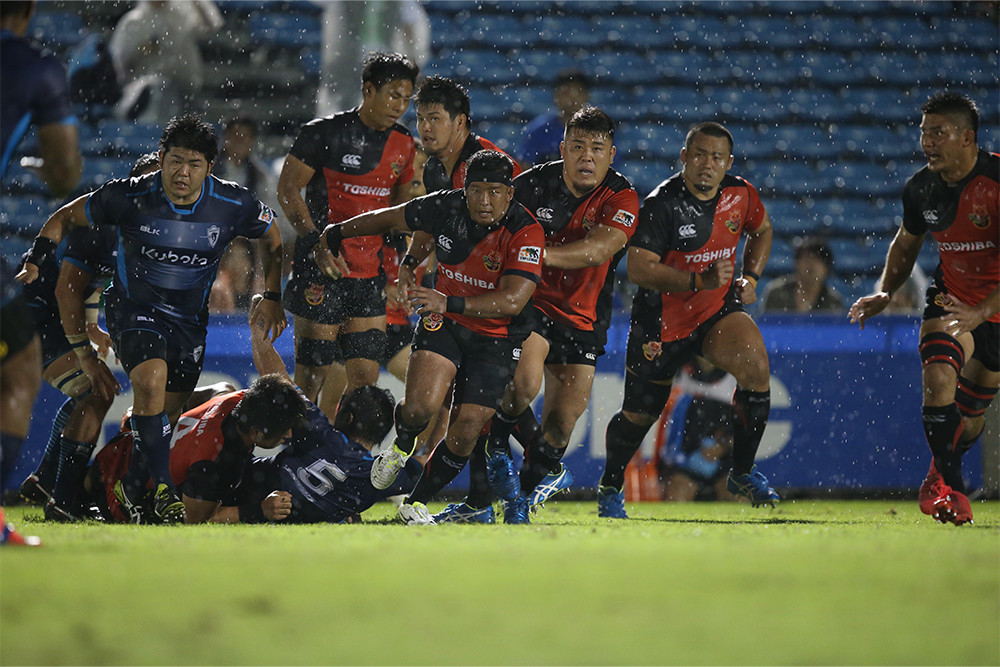
In rugby, as many as 30 total players move in complex patterns on the field.
The number of people on the field (15 vs. 15) is one factor, as well as the complexity and immense variation of the play. Rugby is free-form—from movement, to speed, to bearing, players must quickly adapt to situations as they arise.
“Because of this, the drones we’ve been using since 2015 have really been helpful. They give us a bird’s-eye view of our plays, and have made it easier for us to see balance issues in defense-offence, how we use space; little habits that we have as a team. It’s really detailed—we can even see how much time it takes for a player who just tackled someone to get up and start running again. These videos are great for figuring out our strengths and weaknesses, but they’re also a bit scary. The coach sees everything, so we have to constantly be on edge.”
Video Analytics: The Objectivity of Seeing Yourself in a Video Game
For Hirose, who started playing rugby when he was five years old, the bird’s-eye view of their practices “felt like a video game.” The drones are equipped with wide-angle lenses and 4K cameras that record every bit of the field in crisp, vivid color. The videos give the impression of viewing oneself objectively in a video game, and have revolutionized the way the team looks at its players and plans strategies. This has given it an edge it has never had before.
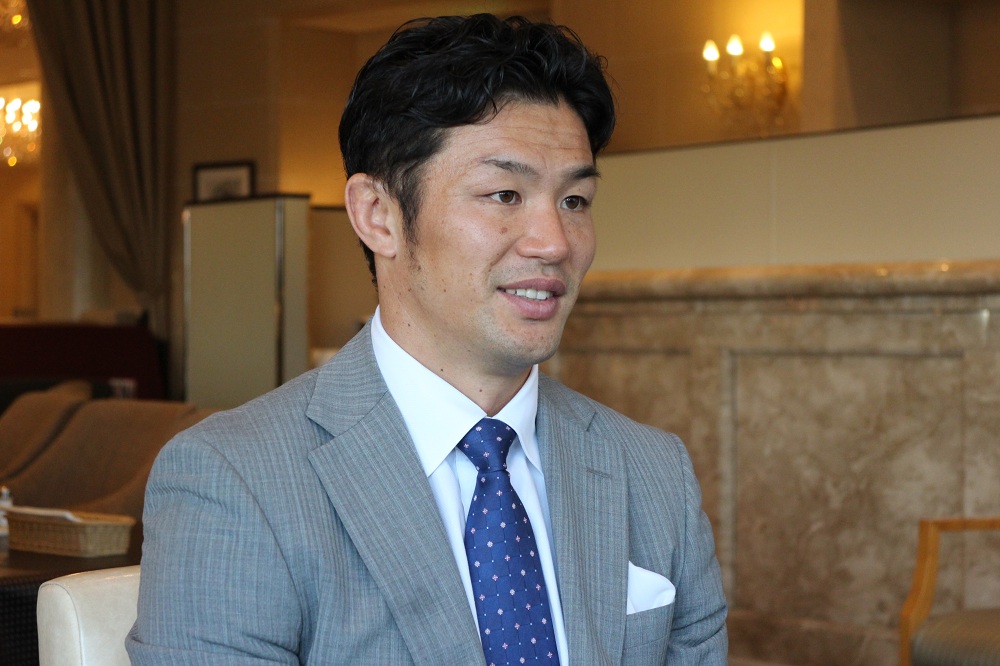
Toshiaki Hirose, Toshiba
”At first, we didn’t know what to make of the drones flying over our heads. But to be able to look at these videos right after the game, even in the car on our way home? I saw the merit in that right away. We can see whether we could have done things better when we weren’t holding the ball—things like that. It’s important for us to look at ourselves objectively while our memories of the game are still fresh. It makes it easier to catch the details.”
Over at Toshiba Brave Lupus, the team is also beginning to utilize video analytics developed by Toshiba Digital Solutions Corporation. They are currently in the process of researching how AI, specifically the combination of cloud computing and deep learning, could be useful—starting from sensor-free mapping of ball and player movements.
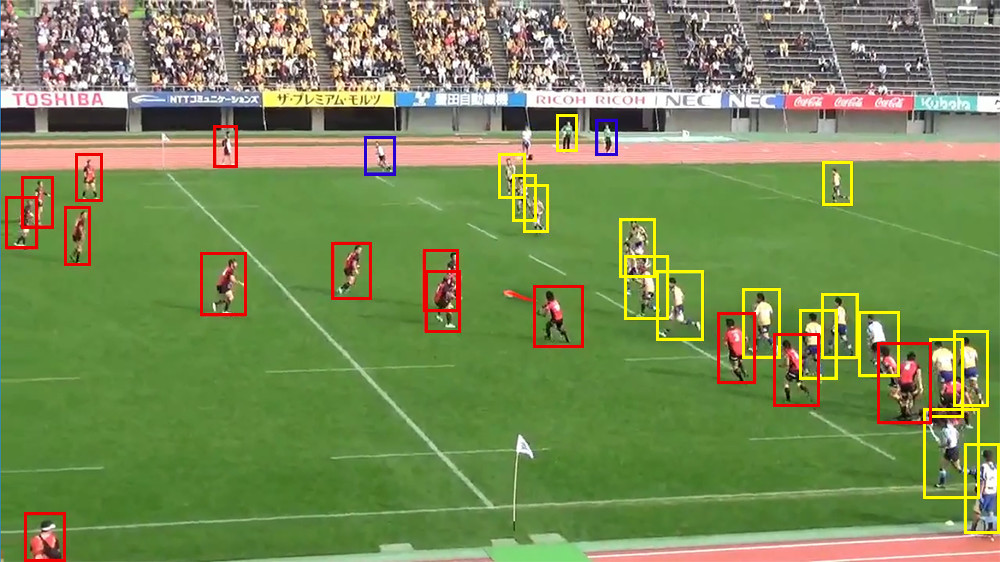
AI sensor-less recognition of the ball and the players
“It’d be great if the AI evolves enough to tell us things like, ‘the other team is open for attack right here’—things that are hard for us to notice when we’re actually in the game.”
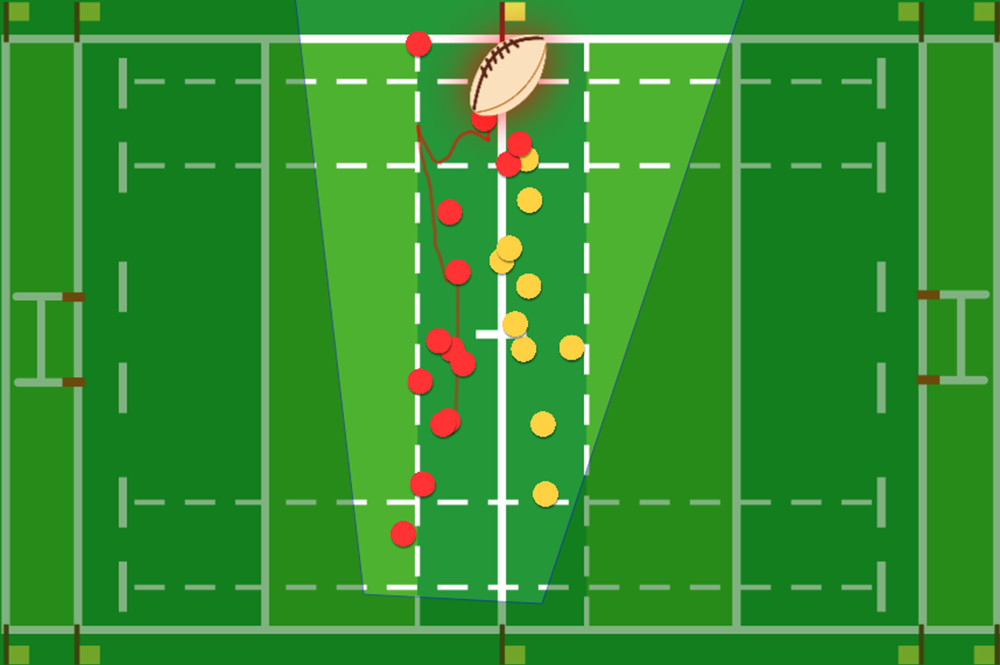
Mapping of ball and player movements
“Another thing is that rugby as a sport is complicated, and has all these rules, and can be hard to understand. I hope now that there’s more attention on rugby in Japan, that ICT will make watching games easier and more interesting. The screen could follow the ball during a scrum, so people don’t get lost wondering what’s happening. Maybe then more people will watch and enjoy the game, and become fans.”
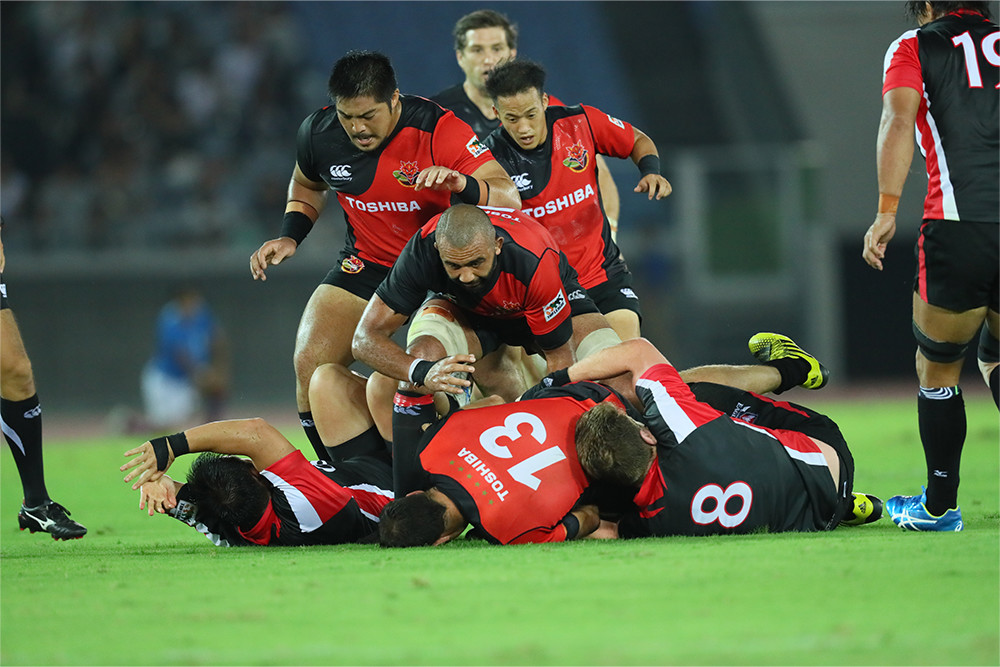
In rugby, players often swarm together so densely that it is difficult to see where the ball is
Somewhere deep down inside, Hirose is still that 5-year old who just loved to play rugby. A competitive player of rugby until just this spring, he says he stands in awe at these developments in ICT, and how they have been implemented in his sport. Imagine—an even stronger Japanese national team plays, drones criss-crossing the sky, an arena full of cheering, die-hard fans. This is a future we are getting closer and closer to each day.
![]()





